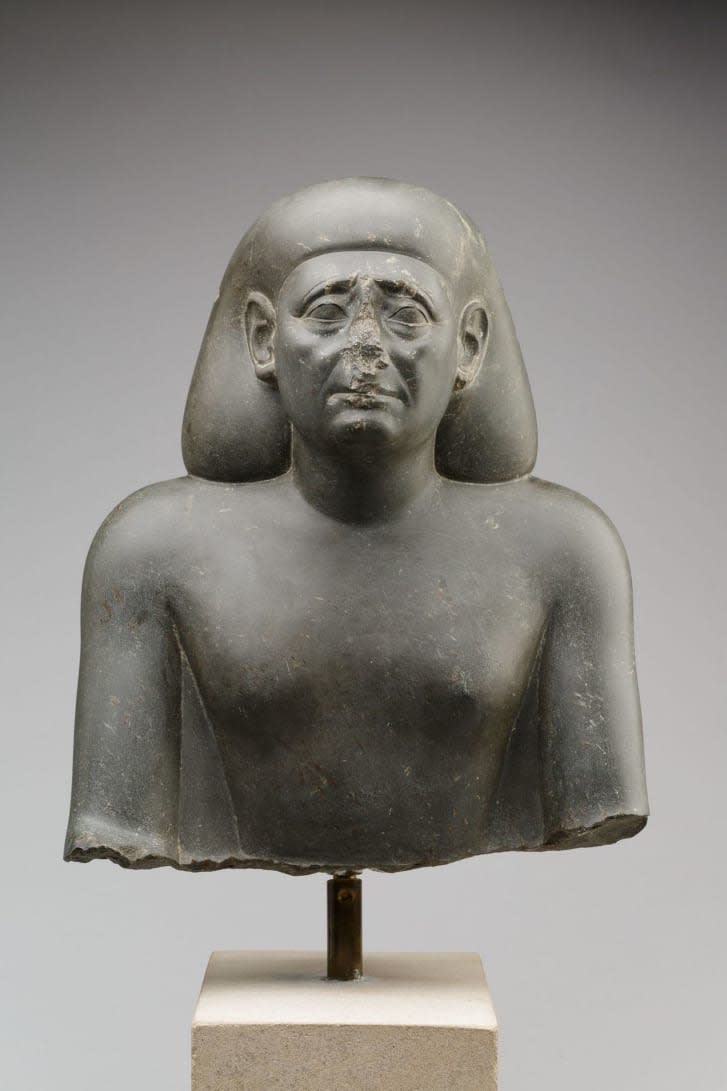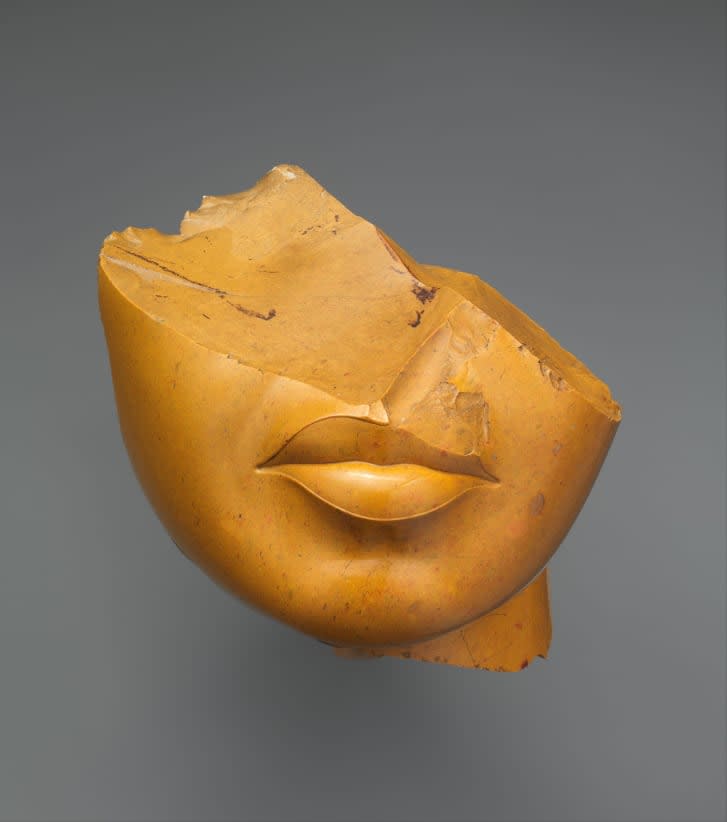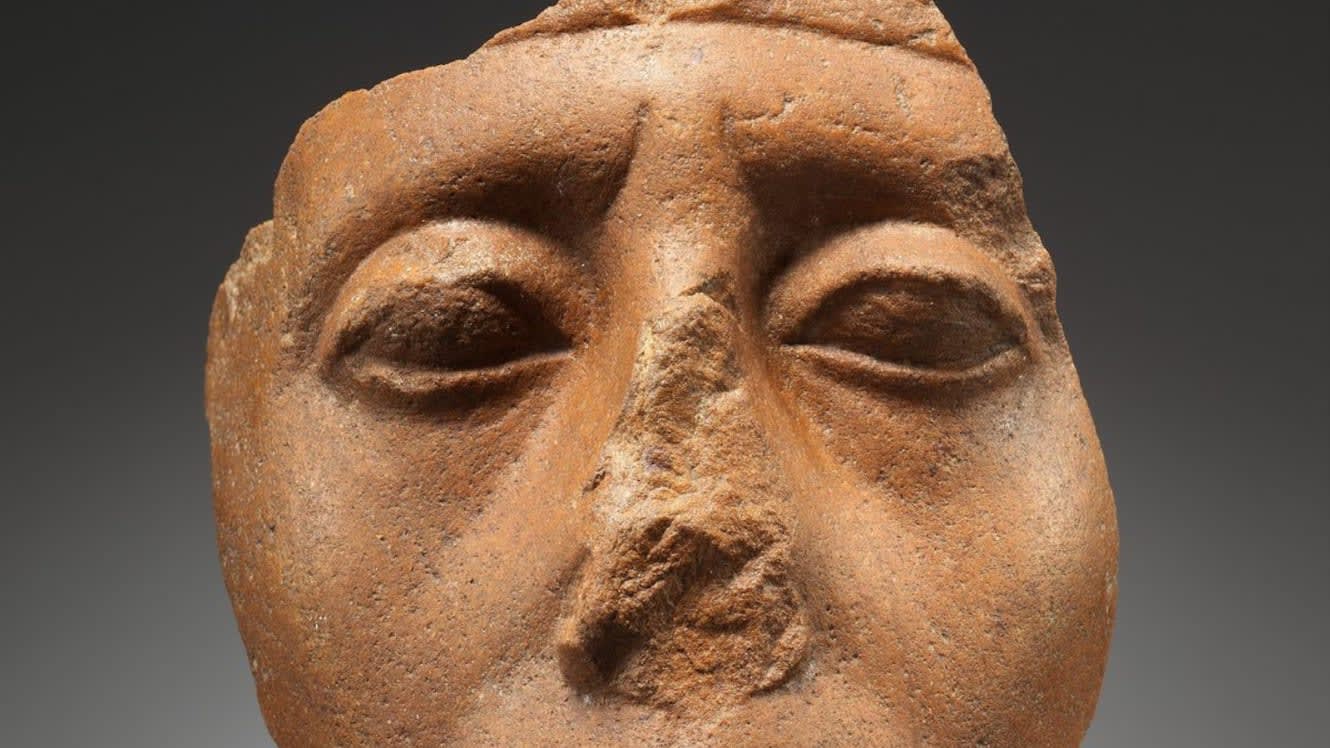دبي، الإمارات العربية المتحدة (CNN) – إذا سألت أمين متحف بروكلين، إدوارد بليبيرج، عن إحدى أكثر الأسئلة شيوعاً، التي يتلقاها من زوار معارض الفنية المصرية، سيكون جوابه "لماذا يتم كسر أنوف التماثيل؟".
وبالطبع، تفاجأ أمين المتحف بداية من هذا السؤال، الذي كان جوابه أمراً مفروغاً منه، وهو أن التماثيل تضررت. قد تجد الأمر طبيعياً أن تتلف قطعة أثرية بعد آلاف السنين. ولكن، هذا الأمر قد دفع بليبيرج للبحث عن أسباب تشوه غالبية الأعمال الفنية المصرية في المقام الأول.

وستنتقل مجموعة من القطع الأثرية من متحف بروكلين إلى مؤسسة "بوليتزر" للفنون في وقت لاحق من هذا الشهر، تحت إشراف أمين المتحف المساعد، ستيفاني فايسبرغ.
وسيشمل معرض "Striking Power: Iconoclasm in Ancient Egypt"، تماثيل يعود تاريخها من القرن 25 قبل الميلاد إلى القرن الأول الميلادي.
ويُساعد المعرض الأشخاص على فهم إحدى أقدم الحضارات في العالم، التي ظلت ثقافتها المرئية كما هي على مدى آلاف السنين. ورغم انعكاس استقرارية الإمبراطورية الطويلة، إلا أن الغزوات الخارجية وصراعات السلطة بين الحكام قد تركت آثارها وراؤها.

"تكرار الأنماط بشكل تناسقي عند مكان الضرر يوحي بأنها هادفة"، هذا ما قاله بليبيرج، وهو مستشهد بدوافع سياسية ودينية وشخصية وجنائية لا تعد ولا تُحصى عن أعمال التخريب.
وأوضح بليبيرج أن الجزء التالف من الجسم يتوقف عن أداء وظيفته. فعلي سبيل المثال، تتوقف روح التمثال عن التنفس عند تحطم أنفها. وبذلك، يكون الشخص المسؤول عن مثل هذا الفعل "قاتلاً".

وتعود الممارسة السائدة في إتلاف صور الإنسان إلى بدايات التاريخ المصري. وقال بليبيرج إن المومياوات التي تعرضت لأضرار بشكل متعمد في فترة ما قبل التاريخ، هي في الواقع "اعتقاد ثقافي أساسي للغاية بأن الإضرار بالصورة يعني الإضرار بالشخص الذي يُمثله".
واتخذ المصريون القدماء التدابير اللازمة لحماية منحوتاتهم، إذ وُضعت التماثيل بالمقابر أو المعابد لحمايتها من ثلاثة جوانب. ورغم هذه الاحتياطات، إلا أنها لم تنجح بشكل جيد. وأوضح بليبيرج أن هؤلاء الأشخاص في الواقع هم ليسوا مخربين، بل هم أشخاص تم تدريبهم وتوظيفهم لأداء هذه المهمة.

